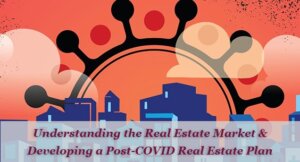Flatten the Curve: Advising Your Clients on Real Estate Assets in Uncertain Times
Fri, Jun 12, 2020 1:30 PM – 3:30 PM
State Bar of Arizona
Program Description:
The disruptions from COVID-19 are impacting the financial and real estate markets, with plenty of unknowns in the coming months. In this program, we will examine the Real Estate Market, pre and post-COVID-19. We will show market trends we are currently experiencing, and how to work with your clients to strategically plan for the next phases in the market, including structuring dispositions and acquisitions, loan defaults, and receivership appointments.
The following topics were recently presented for some of our Corporate Trustee, Fiduciary, Attorney, Banking and Investor clients:
Flatten the Curve: Advising Your Clients on Real Estate Assets in Uncertain Times
Keeping Calm in Uncharted Waters: Understanding the Real Estate Market, and Advising Clients in the Post-COVID Era
Plandemic: Developing a Post-COVID Real Estate Plan
Visualizing Beyond the Virus: How to Create a Post-COVID Real Estate Plan
Keeping Calm in Uncharted Waters: Buying & Selling Homes in the COVID Era
Post-Pandemic Real Estate Bankruptcy Prep: Understanding the Market and Advising Clients
Plandemic: Real Estate Planning in a Post-COVID World
Arizona’s New Receiver Package: Going Long with the Uniform Commercial Real Estate Receivership Act
Get The Dirt On Real Estate Receiverships
Real Property, Real Predicaments, Real Solutions
Considering More Complicated Gifts: Real Estate, Charitable Gift Annuities, Life Insurance
Strategies to Better Protect Lenders’ Collateral: Arizona’s Adoption of the Uniform Receivership Act
Clearer Skies Ahead: Arizona’s Adoption of the Uniform Receivership Act
Ten Real Estate Rules Every Nonprofit in America Should Know
Recession Obsession
Getting to the Goal Line: Appointments of Special Real Estate Commissioners and Receivers to Get Deals Done in Difficult Real Estate Matters
Looking a Gift Horse in the Mouth
Assisting Your Clients in Making Smart Real Estate Decisions
Let us know if you are interested in scheduling an exclusive webinar/seminar, on a complimentary basis. Please, email [email protected] for inquiries.
We can offer continuing education credit/certificates as well!
